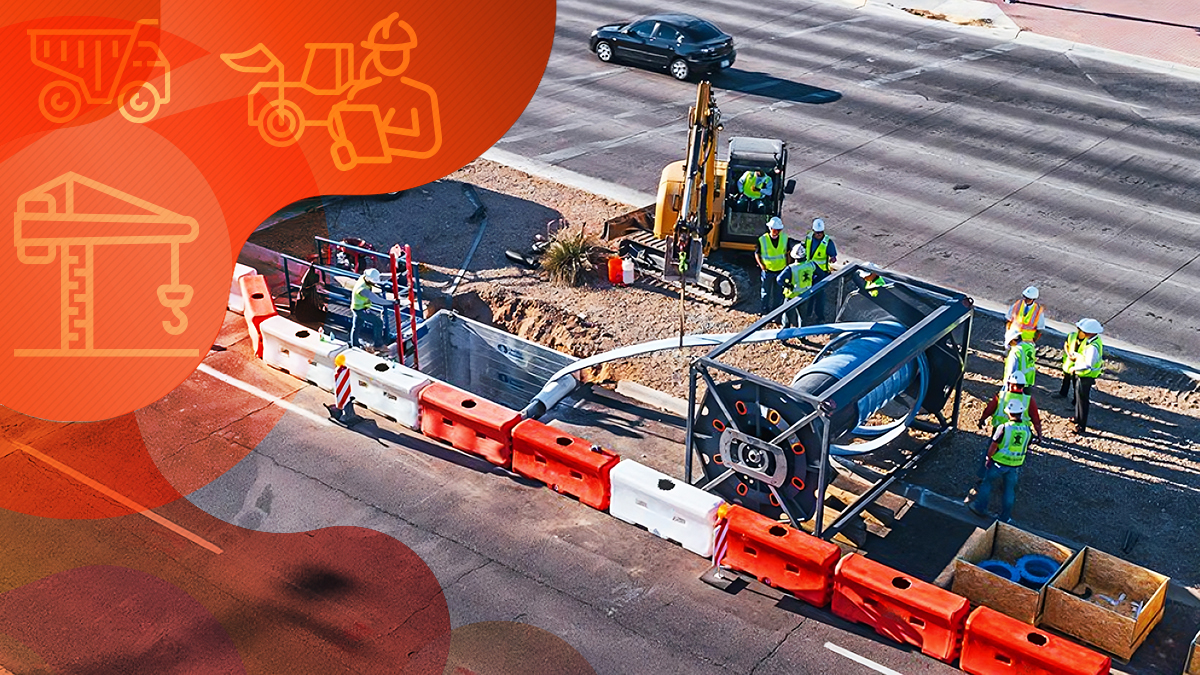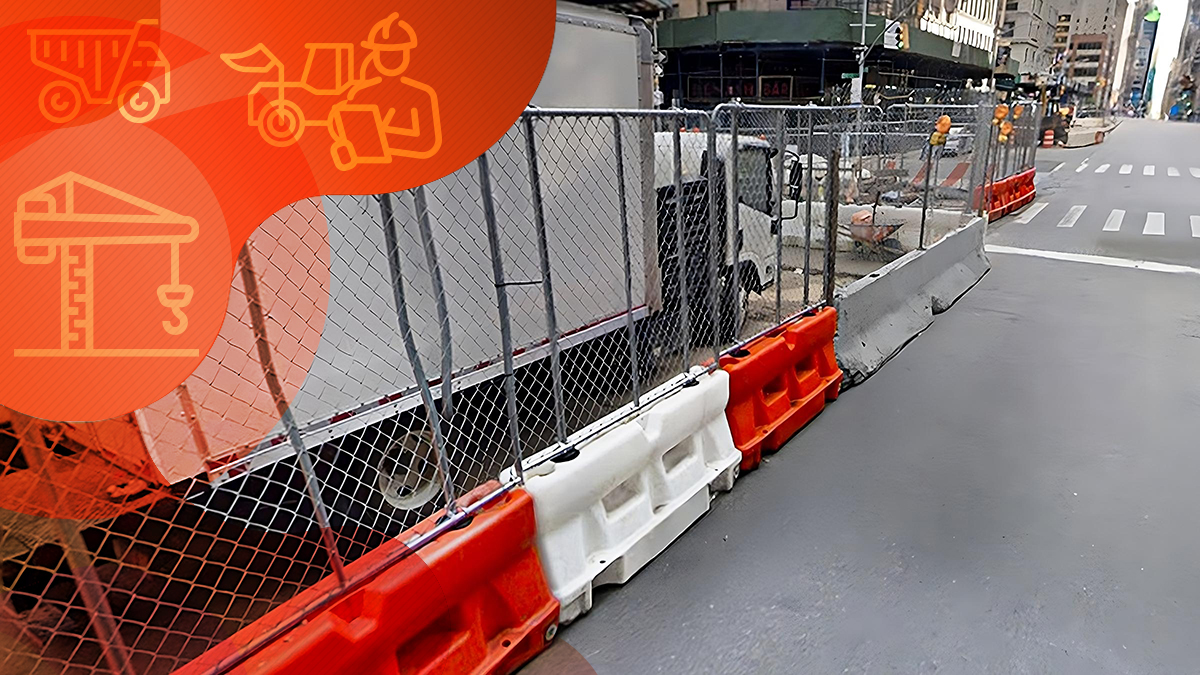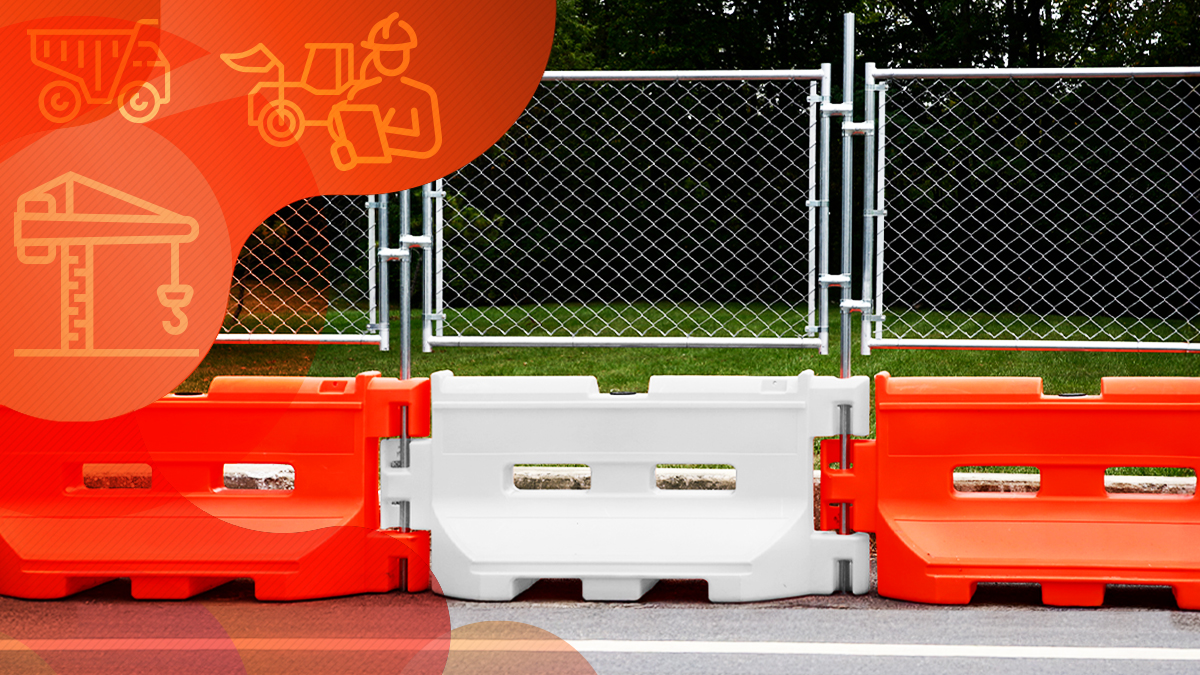Which Fence Panel is Better for Temporary Fence Rentals?
We've discussed fence panel durability, cost, and applications to help you find the best and most cost-effective options for your rental company.

Anyone in the temporary fence rental business knows the best fencing option is the one that meets site requirements. Of course, affordability plays a part but choosing between a chain-link fence and a welded-wire fence means considering several factors including durability, aesthetics, privacy, and security.
Rental companies should also consider their business plans when deciding on what temporary fence is better.
Short-term rentals for outdoor events, such as parades, festivals, and sporting events, have different requirements than longer-term rentals for construction sites. Knowing their market segments allows businesses to focus their resources on a faster return on investment (ROI).
So, what should you consider when deciding between a chain-link fence and a welded-wire fence?
What is Chain-Link Fencing?
Chain-link fencing is made from heavy steel wire woven into a diamond-shaped mesh created by bending the wires into a zigzag pattern. Most chain-link fencing is galvanized to reduce corrosion.
Chain-link fences are often associated with institutional use and may lack the aesthetic appeal that some organizations desire.
However, chain-link fencing has many advantages, such as the following:
Durability
The galvanized steel woven mesh is a very reliable barrier. These panels tend to be the sturdiest temporary fence panels available.
Chain-link fencing can secure high-traffic areas and withstand the wear and tear of harsh weather conditions.
It will stand up to vigorous handling, including repeated setup and removal.
Security
Properly installed chain-link fences are stable and make an excellent security barrier. The open design allows security cameras and personnel to see what is happening inside while keeping unwanted guests out. Chain-link panels are heavy, forming a solid boundary for a construction site or an outdoor space.
Low Maintenance
A chain-link fence requires minimal maintenance. Over time, links may sag from pulling or climbing attempts. Connections may weaken due to the weather.
If the weather-resistant coating is compromised, corrosive agents can reach the underlying steel. Checking the condition of temporary fencing after each use can prevent unnecessary maintenance. Whether its reinforcing a link to strengthen panel connection or simply checking for corrosion,, regular inspections of chain-link fencing can extend its usable life.


Sustainability
Chain-link fences are constructed from steel, a highly recyclable material. Thus, fencing doesn't have to go to the landfill; instead, it can contribute to the world's sustainability efforts. Its hardiness means it lasts longer, which reduces demand for natural resources.
Disadvantages
While chain-link fencing has many advantages, there are a few disadvantages.
- Privacy. In situations where privacy is a concern, screens can be added to fencing to limit visibility.
- Weight. Although the weight is an advantage once installed, chain-link fence panels can be difficult to transport unless carts and other accessories are used.
- Price. Chain-link pre-assembled panels can be pricier than some welded wire alternatives.
Overall, chain-link fences offer the best ROI for rental companies. They are durable and can withstand multiple installations and teardowns. Low maintenance and easy repairs mean the fencing has a quick turn-around for maximum use.
What is a Welded-Wire Fence?
A welded-wire fence is made by spot-welding the intersection of horizontal and vertical wires. The spacing between wires determines the mesh pattern, forming a rigid barrier. It is galvanized to add a protective layer against weather conditions. Because of its rigid construction, welded wire is best used on flat surfaces.
Unlike chain-link panels, welded wire is considered a more aesthetically-appealing metal fence. Like chain-link fences, the welded wire has many advantages.
Durability
Wires are welded together and attached to a frame for maximum durability. Support bars and corner plates can be added to increase stability. Welded-wire fences are both durable and versatile -- unlike chain-link panels, they come in a range of styles and designs. The intersecting wires can be placed 1/2 inch to 4 inches apart, creating a less industrial appearance.
Security
Welded mesh fences are strong and make excellent security fences. The panels come in different heights, and the variation in wire spacing can add security features, creating an anti-scale fence. If privacy is a priority, the wires could be placed close together. If visibility of the enclosed area is needed, the wires could be spaced further apart.


Maintenance
In general, a welded-wire fence requires minimal maintenance. However, the panels are rigid, requiring careful handling to avoid damaging the panels. As with any fencing, welded wire panels should be inspected after every use to ensure their integrity. If repairs are needed, a professional welder may be required.
Sustainability
Welded-wire steel fencing is recyclable. It can be melted down for reuse. With the growing focus on sustainability, using a recyclable product underscores a commitment to the environment.
Disadvantages
While welded wire has advantages, the nature of its construction poses some disadvantages:
- Handling. Rigid panels may be damaged in transport, during setup, or during teardown. They require careful handling to minimize potential damage.
- Repairs. Welds weaken over time, especially when exposed to the elements. To maintain fence integrity, professional welders may be required, which adds to maintenance costs.
Welded-wire fencing is an option where aesthetics are important. It provides a sturdy and secure boundary for an enclosed space.
How to Choose the Best Fence Panel?
Temporary fence rental companies have more to consider than the look, feel, and cost of metal fences. They need to think about their ROI, ease of transport, and durability. When deciding which temporary fence to use, remember the following:
- Chain-link panels are a better initial investment. They can withstand rough handling and harsh weather conditions. As long as routine maintenance is followed, they can be used multiple times without major repairs.
- Welded-wire panels may be a better choice if you're bidding on longer-term construction projects. These panels are usually less expensive, especially when purchased in bulk, and in large construction projects they will not undergo continual handling that can cause damage.
- A welded wire fence provides an alternative for customers wanting a visually appealing barrier. However, using experienced installers can lower the risk of damage and reduce the setup and teardown time.
The best option depends on your business plan. If your target is local outdoor venues that want a different appearance, you may want to start with welded wire. If your customers are looking for security, chain-link panels may be best, especially if the fencing will see repeated short-term use.
Temporary fence rentals offer an additional revenue stream, whether you’re a new or established business. Construction sites require fencing before work starts, and many event sponsors have insurance that mandates barriers or fencing for crowd control. The demand for temporary fences is constant.
To help you compare temporary fencing options—along with bases, gates, and other add-ons—we've created a free downloadable guide. It includes detailed technical specifications and intended applications for every product, making it easier to choose the right solution for your business and customers!


Expand Your Revenue with Fence Screens
Temporary fence rentals are a steady source of income, but adding fence screens to your offerings can significantly boost your profitability. Whether for privacy, branding, or compliance, fence screens provide added value that customers are willing to pay for—especially on construction sites and at high-profile events.
We’ve put together a FREE guide on Fence Screen Reselling to show you how to increase revenue by nearly 45%. Learn about high-demand products, pricing strategies, and how SONCO makes reselling seamless.
Download the guide now and start maximizing your rental profits!


Trend now

Reducing Impact Damage with Water-Filled Plastic Jersey Barriers
Understanding the effects of barrier materials on vehicles and their occupants can help improve road safety.

Choosing Between Concrete or Plastic Jersey Barriers
Not all barriers are built the same. Here’s what to know before choosing between plastic and concrete.

Advantages of Water Barriers with Fence Toppers
Learn how a fence topper transforms water barriers into a more secure, private, and effective work site solution.

